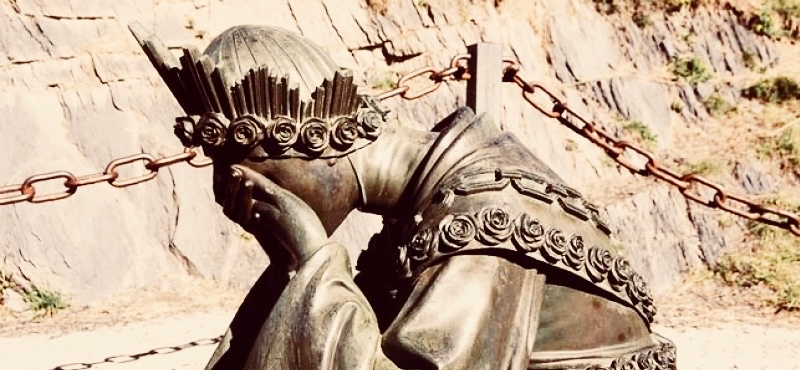
CJS.Org Introductory Remarks:
This is the first part of a serialised in-depth account of the Apparition of Our Lady of La Salette. It is taken from the 1903 The Blessed Virgin in the Nineteenth Century: Apparitions, Revelations, Graces by Bernard St John.
There are four parts parts in this series so far:
- Part 1 The Apparition
- Part 2 Maximin Giraud meets the Curé d’Ars
- Part 3 The Secrets of La Salette
- Part 4 The Fate of Maximin Giraud
As we explained here, we have been so taken with this old book from 1903 that we have even considered reprinting it (probably with additional commentary from myself).
In the meantime, however, we plan to offer a series of extracts from St. John’s book here in our Archives, devoted mainly to out of copyright material.
The extracts have to do with the great approved Marian Apparitions in Nineteenth Century France.
And this extract focusses on the second of these: the weeping virgin of La Salette in 1846.
And with this and the extracts that follow, we also hope to illumine the enigmatic, much maligned figure of Mélanie Calvat – the elder of the two children who beheld the Lady.
For after the Apparition of 1846, Mélanie Calvat was to live an extraordinary life. For some she appeared as a Saint, battling her entire life to be faithful to the difficult message of La Salette. For others, she became an object of scorn and calumny.
Though the extracts in this series cannot hope to do justice to the full story of Mélanie Calvat, we do hope they may shed further light on a courageous and noble soul of whom, the great Thomist Father Garrigou Lagrange once said: “I am inclined to believe that Mélanie remained faithful right up to her death”.
It should be emphasised perhaps that the extracts we present are from 1903 and thus dates from a time when many of the people connected to the Apparition at La Salette were still living, including Mélanie Calvat herself. It should also be noted that the text has been very slightly edited for reasons indicated in a postscript below. And now to the original piece from 1903—RB

From Bernard St John:
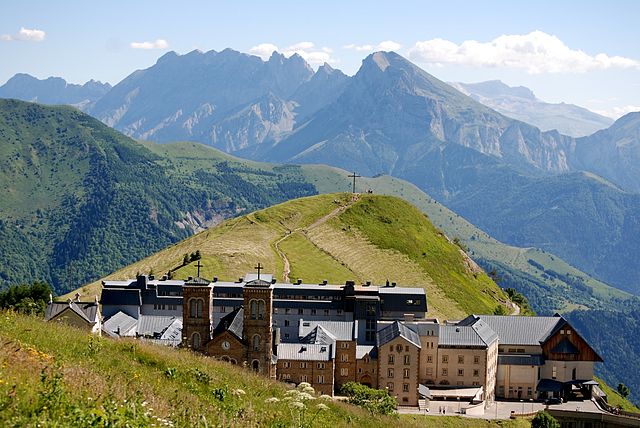
The next sign of a great religious awakening in France comes to us with rumours of a celestial Apparition on the mountain of La Salette.
Accounts of what the cowherd children saw and of what they heard on the Alpine summit by Mount Gargas, September 19th, 1846, quickly sped throughout France and far beyond. Though more than fifty years have passed since then, the girl Melanie and the boy Maximin are still before us as distinctly as when first they came into public notice.
The scene has been described again and again, and yet it retains all its pristine freshness.
We have before us the Alpine planeau of Sous-les-Baisses at an altitude of 6,000 feet above the sea level; Mount Gargas rises beside it more than 1,200 feet higher; and higher still in another direction towers the ever snow-capped mountain of the Obiou.
Before reaching this verdant spot a world of naked rocky grandeur has to be passed. But the spot itself is a very oasis, and the green carpet that covers it clothes also the sides of its immediately surrounding hills.
The mountain violet and the Alpine forget-me-not and other flowers grow there in such profusion that, in some places, they give a prevailing blue tint to whole sweeps of sward. The mountain lines converging towards this spot assume exquisite beauty and softness.
The Apparition to Melanie Calvat and Maximin Giraud
On the afternoon with which we have to do, that of September 19th, 1846, mellow sunlight bathed the scene. It was a Saturday, the last of the Ember days, and the vigil of the Feast of Our Lady of Seven Sorrows.
The hour was about three o clock in the afternoon. The church was at the time, according to the Roman ritual, chanting the vespers of the feast of the morrow. The Stabat Mater was entering into her chants.
Maximin Giraud and Mélanie Calvat were in the ravine of the Sezia, at the base of Mount Gargas. They had just risen from the grass, where they had been sleeping after their frugal mid-day meal of rye bread dipped in water.
These two had met for the first time three days before; they had played together in these parts the day before; they had come there together that morning tending their masters cows.
It was the thought of the cows that had caused Melanie to suddenly spring to her feet on awaking. The animals were not to be seen.
She called Maximin, who awoke with a start, and then sprang to his feet also.
After crossing the ravine and ascending a gentle acclivity, they caught sight of their cattle on the flank of Mount Gargas. They then went back towards the spot they had left.
More than one mountain torrent flowed into the Sezia. One of these was known as the Fontaine des betes, and another as the Fontaine des homines. It was into the water of this stream that the boy and girl had dipped their bread before eating it at mid-day.
Close by was the dried-up bed of another stream, the Petite Fontaine, which flowed at certain seasons only.
At the exact time of which we write, at a spot in its midst, there were some stones piled one upon another. These had been placed there just before by the boy and girl, playing at making what they called a Paradis, which was a sort of miniature altar covered with wild flowers. It was near this spot that the two had slept during the early part of the afternoon. The panetieres that had contained their bread were still on the ground there.
On drawing near, Mélanie stopped short; then calling to Maximin, who was a little behind her, told him to come quickly and see a bright light. The boy was beside her in a moment.
“Where is it?” he asked. She pointed in the direction of the Petite Fontaine.
According to the description of these little cow herds, what they at first saw was as a globe of light of a brightness far exceeding that of the sun, though of a different kind.
As they looked, the luminous globe seemed to open. They then saw within the radiance the majestic figure of a woman in forward-drooping attitude and sitting on the stones of their paradis in the dried-up stream. Her elbows were on her knees and her face was hidden by her hands.
A feeling of awe came over Mélanie, and she let fall her stick.
“Pick it up,” said the boy. ” If she does us any harm, I will give her a good blow.” With this, he brandished his own stick.
They then saw the sitting, drooping, figure rise to her full height and fold her arms, and they heard a gentle voice, as if close by, say: “Come nearer, children, and do not be afraid; I have something of importance to tell you.”
They drew near, and the figure advanced towards them, stopping at the spot where they had shortly before been sleeping. They say that her feet did not touch the ground by a distance of about twenty centimetres. They were close to the majestic figure, but in front of it, and looking up at it, one on each side. They then listened to the following words:
“If my people will not submit, I shall be obliged to let go my Son’s arm. I can no longer hold it up. How long have I not been suffering for you?
In order that my Son forsake you not, I am obliged to pray to Him without ceasing. And you all pay no attention to this.
No matter how much you may pray, or what you may do, you will never be able to make me a return for what I have done for you.
I have given six days wherein to labour, and the seventh day I have reserved for myself, and that (seventh day) you will not give me.
It is that which makes my Son’s arm heavy. And those who drive carts can no longer swear without using my Son’s name. It is these two things that so weigh down His arm.
If the crops fail it will be through your own fault. I gave you a proof of this last year in the potatoes, and you paid no attention to it.
On the contrary, when you found bad ones, you swore and made use in your oaths of my Son’s name. They will go on rotting until Christmas, and then there will be none.”
Mélanie, not understanding the meaning of the word potato in French, and the Apparition knowing what was passing in her mind, said:
“As you do not understand French, my children, I will speak to you in another way.”
She began speaking in patois, the dialect of the country, and repeated what she had just said concerning the potatoes: “They will go on rotting until Christmas, and then there will be none.”
” Oh no, Madame, that cannot be!” said the boy.
“Yes, my child, you will see that it will be,” was the reply.
The sublime admonitress continued : “Let him who has wheat sow it not. The birds will eat what is sown, and should a few blades spring up, the grain from them will become dust in the threshing.
There will be a great famine; but before that, children under seven will be seized by trembling and die in the arms of those who hold them, and grown-up people will do penance by hunger. The grapes will rot, and the walnuts will turn bad.”
The Secrets of La Salette and Further Prophecy
She, who thus spake, here said something in secret to each of the children.
As she spoke to each in turn in what seemed to be her previous tone of voice, the other could see her lips move, but could not hear what she said.
Hence the famous secret or secrets of La Salette.
[Note: a further instalment in this series will deal more with the Secrets – RB]
After this interruption, the message of prophecy continued: “If they become converted, the stones and rocks will be changed into heaps of corn, and the land will be sown with potatoes.”
“Do you say your prayers, my children?” asked the voice that had just been foreshadowing possible woes and benedictions for France. The tones of this voice struck the listeners by their enchanting sweetness.
“Oh no, Madame, not very often,” was the reply.

“Oh, my children, you must say them night and morning,” were the words the boy and girl listened to.
“When you have not much time, say only the Our Father and the Hail Mary; and when you have more time say more.
Only a few elderly women go to Mass. The rest work on Sundays all the summer, and when the winter comes, the boys, not knowing what to do, go to Mass, only to turn religion into ridicule.
During Lent, they go to the shambles like dogs. My children, have you never seen wheat that is diseased?”
“No, Madame, we have never seen any,” was the reply. “Yes, my child, you have.” These last words were addressed to Maximin.
“It was when you were near Coin with your father, and when the man to whom the ground belonged, said: Come and see how my wheat is spoiling.
You both went, and your father took two or three ears of wheat and rubbed them together in his hands, and they went to dust.
On your way back, when you were only a few hours walk from Corps, your father gave you a piece of bread and said: Take and eat, my child; eat this year, for there is no knowing who will eat next year, if the wheat disease continues like this.
Maximin replied: “What you say is quite true, Madame; I had forgotten it.”
“Now, my children, you will make this known to all my people.” These words were spoken in French instead of in patois. The message was delivered the figure was about to vanish.
Before following it with the mind, as Melanie and Maximin did with their eyes, to the spot whence it ascended, we will borrow a few words from the after accounts of the two witnesses, and thus endeavour to present something of the celestial picture that met the children’s gaze.
The two tell us that as they stood and listened they could, notwithstanding its exceeding brightness, look without flinching on the light that enveloped the Apparition.
According to Mélanie’s description, the face of her for whom she could find no other name than that of the Beautiful Lady (la belle dame) was pale rather than otherwise, and oval.
“She shed tears all the time she was speaking,” said the girl.
She describes the costume as white, with glittering points of light upon it, with gold-coloured drapery in front, which she calls an apron, and with a white kerchief or fichu covering the shoulders. This kerchief or fichu was bordered with coloured roses, and there were multi-coloured roses about the feet.
On the head was a crown of gold, and on the breast a crucifix hanging from a chain of gold round the neck, and shewing upon it the implements of the Passion.
The boy does not seemed to have noticed these details of costume as minutely as did Melanie, nor did he see the tears fall.
Alluding to this subject twenty years later in a publication entitled Ma profession de foi, he says: “How could ignorant children as we were be expected to find fitting words for the description of things so extraordinary? Probably what we described as crown, coif, chain, fichu, and apron, hardly had the form of such. There was nothing of earth in the costume we looked upon. Seen in the blaze of multi-coloured rays that met, it presented a magnificent ensemble which we in describing have diminished and materialised.”
Interesting queries have been put forth concerning the symbolical meaning of the costume of the Apparition of La Salette. Was the so-called fichu meant to represent the amice worn by the priest at the altar? has been asked. And, was the gold-coloured drapery in front, described as an apron, part of a long scapular or a dalmatic? It is a question that has been discussed by more than one theological writer.
Mélanie and Maximin persisted in maintaining that the texture of the dress of the Beautiful Lady could be compared to nothing earthly, any more than could be the colour and brightness of the rays of light that surrounded her.
We return to the boy and girl in the ravine of the Sezia, looking up at their celestial visitant and listening to her last words: “You will make this known to all my people.”

They tell us that after this the figure moved forward, seeming to glide over the surface of the grass but without causing a blade to bend.
Their first impression of surprise over, they ran after it, came up with it, and took their places near it, one standing a little in the foreground and the other a little behind.
Then, before them, the Beautiful Lady, as they say, rose gradually into the air, remaining as suspended for some minutes at a distance of about two metres from the earth.
After this, the figure continued to rise, the head first becoming lost to view in the blaze or globe of light that surrounded it, and then the body, and lastly, the feet.
The two, who tried to follow it with their eyes, could only see the globe of light ascending, until that, too, be came lost to view.
The two witnesses of the phenomenon, as one of them tells us long afterwards in writing, continued to look upwards and then around, and remained for some time speechless.
When they came to themselves, Mélanie was the first to speak. “It must be the good God,” she said, “or the Blessed Virgin or some great saint.”
“If I had known that,” said Maximin, “I would have asked her to take me with her.”
Melanie and Maximin Return Home
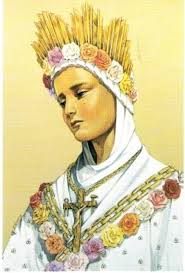
The sun was sinking in the azure sky on that glorious, cloudless September afternoon. At the usual evening hour the two little cow-herds drove their cattle home, taking the way to the neighbour ing village of the Abladins, one of a cluster of hamlets on the mountain side. Maximin was temporarily in the employ of a man there named Jules Selme. Mélanie had since the previous spring been in the service of a man named Baptiste Pra, also of the Abladins.
Before going home to his own master, Maximin dropped in on the family of Mélanie’s employer and began giving his account of what had taken place.
In the meantime, Mélanie remained loitering in the stable, as she was in the habit of doing. Called upon to give her version of the story, she replied: “Maximin has already told you.”
Being forced to speak, her account exactly corresponded with the boy’s.
While some believed, and others did not, the account of the Apparition on the mountain quickly sped through the adjoining villages. Abbe Jacques Melin, cure of La Salette, alluded indirectly to the subject in his sermon at High Mass the following morning, the day being Sunday.
In the meantime the cure had seen Mélanie and Maximin, had listened to their account, and, though a man of extreme prudence, had told them, with tears in his eyes, that they had seen the Blessed Virgin.
A striking feature in the affair was the perfect uniformity of the children s accounts and the marked change that had come over the two. On leaving for Mount Gargas on the morning of the Apparition they knew nothing of French, if we except the fact that Maximin was acquainted with a few words of that language.
On going home on the evening of the same day, they were able to relate in fluent French what had happened. Moreover, the intelligence of both had become suddenly illumined and enlarged, but only as to what concerned the Apparition. On this subject they could already speak with something like theological lucidity and precision. On all other subjects they remained ignorant as before.
And this contrast was to continue. For years, they were to present the singular spectacle of human insufficiency in relation to the ordinary affairs of life, and subtlety of intelligence, and remarkable readiness of reply, in defending their account of the Apparition.
Their natural slowness of apprehension was such that Mélanie, put to school almost at once with the Soeurs de la Providence of the neighbouring town of Corps, was not able, until two years later, at the age of seventeen, to make her first communion; while as to Maximin, likewise under good tuition, four years had to elapse before he succeeded in learning the Lord’s Prayer, or was able to serve at Mass.
The day following the Apparition, Maximin went back to his father at Corps. Thus he and Mélanie were separated from each other, and were to remain so.

The Miraculous Waters of La Salette
As the rumour of what had taken place on Mount Gargas got noised abroad, many people went to the spot some going to see, and some to pray. At first the ecclesiastical authorities looked on, neither condemning nor openly approving this new devotional movement. In fact, the Bishop of Grenoble had at once given the clergy of his diocese to understand that he wished them to observe a strictly neutral attitude.
Before going further, it is well to notice a feature of interest in connection with a site soon to be regarded as holy by large bodies of Catholics throughout the world.
The bed of the Petite Fontaine, where the Apparition was first seen, was dry, as has been said, and from time immemorial it had never been known to be otherwise than dry at that season of the year.
Mélanie and Maximin make no mention of having, after the Apparition, seen water where just before had been dry land. It is probable that, after the departure of the luminous figure, they did not think of looking at the spot.
It is certain, however, that people on the following day saw water flowing at the Petite Fontaine, as at the time of great thaws. From that day to this, it has continued to flow with out the intermission of a single hour.
At an early stage of the history of La Salette, this water was analysed and declared by the highest chemical authority of the time to be perfectly pure and free from any ingredient capable of acting medicinally upon the human body.
This was the water soon to become world-famous, to be sent to different parts, and to be looked upon as an important agent in most of the cures reputed miraculous in connection with La Salette.
In the afflux of people to the mountain, which began at once and in such a marked manner, we may distinctly see the beginning of the great pilgrimage movement of the last fifty years.
Soon people began talking of remarkable cures in connection with La Salette. The first was that of Marie Laurent, a woman of Corps.
This person had been ill for the previous twenty-two years, during which time she had suffered much from rheumatism. She had ended by becoming paralysed and almost bed-ridden. She could not move without crutches, and had to be lifted into bed like a child. Her case was well known in the town.
In October, 1846, within a month from the day when Mélanie and Maximin had related for the first time their marvellous experiences by Mount Gargas, we find Marie Laurent making a novena to the Blessed Virgin under the invocation of Notre-Dame de la Salette. She was asking for her restoration to health. From her own account she was moved to do this as by an interior impulse. Three more novenas followed for the same object.
We are on the last day of the third novena, December nth. It was in the afternoon, and the suffering woman was alone. The members of a religious association to which she belonged, that of the White Penitents, had, with a certain number of the inhabitants of Corps, gone that morning on a pilgrimage to the site of the Apparition.
Marie Laurent knew that she was having part in their prayers. At a certain moment, as she lay and prayed, a change came over her. She felt that she had recovered the use of her limbs.
She arose, dressed herself, and went at once to the neighbouring church to pour out her soul in joy and thanksgiving. There she awaited the return of the little multitude from the mountain. Hearing their voices at a distance she went out to meet them.
Great was the surprise of the pilgrims to see a person, who, until then, had been known to all as a helpless cripple, appear as one in perfect health, and take her place at once between Melanie and Maximin, who headed the band.
The Magnificat burst from the throng and the church bells pealed forth. The cure of Marie Laurent, which proved to be, in every sense, a radical one, was a point of departure in the history of the new devotion. Other cases of a like nature followed quickly. Others did as this woman had done: they hoped, prayed, and obtained.
Mgr. Brouillard, Bishop of Grenoble, lost no time in appointing an ecclesiastical commission to enquire into these facts. Half the members composing the commission belonged to the Great Seminary of Grenoble, and the other half to the cathedral chapter of that town.
Each half had to do its work apart, and draw up a separate report. Two of the body, Abbe Berthelot, professor of history at the Great Seminary, and INI. Orsel, Superior of that seminary, and at the same time honorary canon of the cathedral, were appointed commissionary delegates to enquire into the circumstances of the remarkable cures, said to be effected in connection with La Salette.

With this object they visited, in the course of a year, as many as nine dioceses in the south of France, in order to verify every case by personal observation.
This proves how, in a few months, the devotion born of the recital of Melanie and Maximin had already spread. In the summer of 1847 it received the marked approbation of two prelates. One of these was the Bishop of La Rochelle, who, after visiting La Salette, wrote a pamphlet having for title, Nouveau Recit d’apparition de la Sainte Vierge sur les Alpes.
The other was the Bishop of Langres, who, before a canonical verdict had been delivered concerning the Apparition, constituted himself from the pulpit its exponent and apologist.
He, moreover, in July, 1847, instituted in his diocese, supported in the matter by a Papal Brief, a confraternity, having for object atonement for the crimes specially stigmatised in the message at La Salette, namely, swearing, blasphemy and profanation of the Sabbath.
The year 1847 has still something further to show us relative to the progress made by the new devotion. On September 19th, the first anniversary of the Apparition, upwards of 50,000 persons assembled on the mountain of La Salette.
It is well to say here that the inhabitants of the neighbouring hamlets, as well as those of the town of Corps, had been converted not only to belief in the Apparition, but also to a completely Christian manner of life. Blasphemy and swearing were already among them things of the past, and the Sunday services were, without exception, well attended.
Hitherto pilgrims had gone to the Planeau by Mount Gargas singly, or in bands. On the first anniversary day, September 19th, the gathering there took the form of an imposing religious demonstration. By this time also priests were not afraid to show themselves on the spot in surplice and stole.
Mass followed Mass, the Holy Sacrifice being celebrated in a temporary chapel made of planks. During the few hours thus spent in religious exercises on a spot already considered sacred, the crowd gave unequivocal signs that devotion to Our Lady, under the invocation of Notre-Dame de la Salette, had already taken root in the hearts of thousands.
By the end of the year, the Commission of Enquiry had drawn up its report, which declared that a certain number of the cases examined answered to all the conditions of distinctly supernatural cures.
The Bishop of Grenoble refrained for the moment from pronouncing doctrinally on the subject. In the meantime the devotion spread, and the number of cures increased.
The Healing of Antoinette Bollenat
One of the most remarkable of these early cases, and one considered miraculous, was that of Antoinette Bollenat of Avallon, in the Yonne.
This woman had been ill for twenty years, and her case was considered hopeless. On the evening of November nth, 1847, a priest was called in to administer to her the last Sacraments. She made her confession between successive attacks of syncope. Instead of dying as was expected, she continued in the same state, and began a novena to Notre-Dame de la Salette, drinking at the same time a few drops of the already famous water of the Petite Fontaine by Mount Gargas. This went on for nine days.
A view of this woman’s previous state will show in relief the supernatural character of her cure. Her state of confirmed ill-health and incessant suffering had begun when she was twelve years old; she was thirty-two at the time of which we write. For long years she had suffered from continual sickness and frequent attacks of syncope, and had all the while been unable to take solid food. In time her condition had become complicated by an abdominal tumour.

In 1844 she became unable to move at all. The following three years were passed by her in bed and lying on her back. To add to her suffering, the under side of her body through constant lying became covered with sores.
Antoinette Bollenat was a person of singular piety, and bore her trials with exemplary patience.
On the evening of November nth, 1847, as we have shewn, her end was considered imminent. During the novena that followed, she appeared to get worse. Though perfectly resigned to die, she believed, however, that she was about to get well. On one occasion, when the novena was about half way through, her medical man, Dr. Gagniard, calling, found her, as he thought, so near death that his parting words to those around were: “I can do nothing more. Let her die quietly.”
We are on the Feast of the Presentation of the Blessed Virgin and on the last day of the novena. At about two o clock on that day she felt the want of food. At her request a cup of broth, with bread in it, was brought her. She swallowed it without ill-effects. This was the first time in fourteen years that she had been able to take anything of the kind.
Believing that her looked-for cure was about to be effected, three times that afternoon she attempted to rise, but each time without success. For a moment, the idea flashed through her mind as to whether the firm belief she entertained that she was about to be restored to health was a delusion.
“The thought was as a lightning flash,” she says, and adds: “My confidence in God came back, and I resolved to wait patiently.” She then began invoking the Blessed Virgin as Notre-Dame de la Salette.
At about half-past four in the afternoon her pains and palpitations suddenly ceased. She then put her hand to the place of the tumour, which just before she had been able to feel, and found, as far as touch could tell her, that every sign of it had disappeared. She remained quiet until those about her had left the room, having, however, taken the precaution to ask some one in her confidence to place clothes within her reach.
When alone, she rose, fell back on the bed a moment through weakness, rose again, dressed herself, and then went on her knees in thanksgiving. Her brother’s wife, Josephine Bollenat, entered at the moment to light a fire, believing, of course, that the sufferer was in bed. What was not, therefore, her surprise when she heard Antoinette ask for her shoes?
This surprise was greater still when she saw her sister-in-law come towards her walking with a firm step. Her feelings expressed them selves in a shriek. On this her husband, thinking that his sister must have breathed her last, came into the room. Antoinette, enjoying the astonishment of those around her, seated herself by the fire. She afterwards partook of the ordinary evening meal, and passed a good night.
The next day she arose in perfect health. When spoken to on the subject of the Blessed Virgin, she would reply, “I cannot thank her! All I can do is to look at her statue.”
Her medical man, Dr. Gagniard, after carefully examining her, distinctly stated that there remained no trace of her former complicated state of disease.
He even went so far as to say on this subject to Abbe Gagniard, cure of Saint-Martin : “In truth, if it were necessary, I would sign with my blood that this cure is a miraculous one.”
The tumour which had thus suddenly disappeared was of seven years growth. As remarkable as its sudden disappearance was the equally sudden disappearance of the sores with which the sufferer’s back and loins had been covered, and which nothing up to that time had been able to heal.
It had been no unusual thing for the person changing the patient’s linen which sometimes had to be torn from the body to see particles of flesh adhering to it. From the evening when Antoinette Bollenat, rising from her bed and dressing herself, stood erect a sound woman, there was no sign of a sore upon her.
This case, brought before the Ecclesiastical Commission of Grenoble, was classed as supernatural. A commission, appointed by the Archbishop of Sens to consider it, also pronounced it supernatural.
Apart from numerous less striking cases, no less than sixty cures as remarkable as that of Antoinette Bollenat were recorded during the years 1848 and 1849.”
Afternote:
Bernard St John’s book continues the story of Mélanie, Maximin and La Salette, as we have indicated. To navigate through this series:
- Part 1 The Apparition
- Part 2 Maximin Giraud meets the Curé d’Ars
- Part 3 The Secrets of La Salette
- Part 4 The Fate of Maximin Giraud
Also: for reasons of clarity and easier assimilation from a computer screen, minor editing and formatting changes have been introduced, including paragraph headings and breaks.
Foreword for Monarchy by Roger Buck

Buying Books at Amazon Through These Links Gives Us a Commission. This Supports Our Apostolate. Thank You if You Can Help Us Like This!


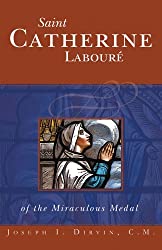
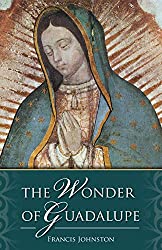










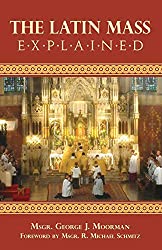

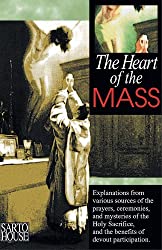








Comments
comments are currently closed
11 responses to “Mélanie Calvat and Our Lady of La Salette—Pt. 1: The Apparition”
[…] Cor Jesu Sacratissimum HomeAbout UsKim's WeblogRoger's WeblogWebburstsReviewsImagoArticlesUK StoreUS Store « Our Lady of La Salette – Part I: The Apparition […]
[…] Excerpted Recommended SERMON IMPACT article from https://corjesusacratissimum.org/2012/06/our-lady-of-la-salette-part-i-the-apparition/ […]
[…] The first part may be found here. In that part, we explained that we hope to cast light on that enigmatic, maligned visionary of La Salette – Mélanie Calvat. […]
[…] As these words are typed, we are in process of publishing a series of entries on Mélanie Calvat, the first of which can be found here. […]
[…] We now take up the continued story of Mélanie Calvat and Maximin Giraud, in a third part of our account, taken from The Blessed Virgin in the Nineteenth Century: Apparitions, Revelations, Graces by Bernard St John. (The first part of this series is here.) […]
[…] As we said in the first part, Saint Bernadette’s story is so well known that there would seem little need for the kind of explanatory material we have been adding to our other series on Marian Apparitions (such as this one concerning La Salette). […]
[…] reader can also find extracts from Bernard St John on Our Lady of the Miraculous Medal, as well as La Salette (in a series starting here) and Our Lady of Pontmain (in a series starting […]
[…] can also find extracts from Bernard St John on Our Lady of the Miraculous Medal, as well as La Salette (in a series starting here) and Our Lady of Pontmain (in a series starting […]
[…] can also find extracts from Bernard St John on Our Lady of the Miraculous Medal, as well as La Salette (in a series starting here) and Our Lady of Pontmain (in a series starting […]
[…] can also find extracts from Bernard St John on Our Lady of the Miraculous Medal, as well as La Salette (in a series starting here) and Our Lady of Pontmain (in a series starting […]
[…] can also find extracts from Bernard St John on Our Lady of the Miraculous Medal, as well as La Salette (in a series starting here) and Our Lady of Pontmain (in a series starting […]
[…] The interested reader may wish to consider the 1846 Apparition of Our Lady of La Salette (a series on which starts here). […]
[…] We continue with the fourth part in our series of La Salette. Here and in the following part, we will continue with extracts from Bernard St John’s book (See our first part here, for more about this.) […]
[…] the 1830 Apparition of the Miraculous Medal (here), as well as serialised accounts concerning Our Lady of La Salette in 1846 (starting here), Our Lady of Lourdes in 1858 (starting here) and Our Lady of Pontmain in 1871 (starting here) […]
[…] example, the Apparitions of Our Lady of La Salette can be found here, as well as Our Lady of Lourdes (here) and Our Lady of Pontmain […]
[…] example, the Apparitions of Our Lady of La Salette can be found here, as well as Our Lady of Lourdes (here) and Our Lady of Pontmain […]
[…] repeatedly in Nineteenth Century France: in Paris, in the Rue du Bac (1830) on the holy mountain of La Salette in 1846, to the child Bernadette at Lourdes (1858), to the children of Pontmain (1871) – and perhaps […]
[…] can also find extracts from Bernard St John on Our Lady of the Miraculous Medal, as well as La Salette (in a series starting here) and Our Lady of Pontmain (in a series starting […]
[…] of Fatima. But in another of the eight approved apparitions, she appeared in 1846 to the young Mélanie Calvat and Maximin Giraud as they tended flocks near La Salette-Fallavaux in the French […]
[…] for a Miraculous Medal to be struck and worn around the neck. And then she appeared again in La Salette and Lourdes urging penance. And in Pontmain with the expression of extreme sadness […]
[…] France – which Apparitions we have covered extensively at this site – at Lourdes, as well as La Salette, Pontmain and of course in Paris at the Rue du […]
[…] can also find extracts from Bernard St John on Our Lady of the Miraculous Medal, as well as La Salette (in a series starting here) and Our Lady of Pontmain (in a series starting […]
While sitting in a waiting room awaiting the results if my husband’s examination, I ran across this document on Pinterest. As I was reading the section that begins, “In October, 1846,… we find Marie Laurent…(invoking) Our Lady of de la Salette” for healing.
I immediately said a prayer for the healing of my husband, who has been battling a type of ulcerative colitis for several years. He takes several medicines, including chemo and infusions. No part of his colon was unaffected and was too involved for surgery. Despite many years of medications, he continued to worsen. We were hoping that his latest additions of medicines would help.
At the very moment I said my short prayer for healing, the doctor stepped out and called my name. I literally jumped. I went into the private consultation room where he showed me photos. He then explained that these beautiful photos showed that my husband was in histological remission. I consider this a miracle. Thank you for introducing me to Our Lady of Salette. I look forward reading more.
Dear Linda,
Thank you for sharing your beautiful story with us.
We are always deeply grateful for being able to share the wonders of the faith with others.
La Salette is an incredible pilgrimage site. Our Lady bestows such graces there. And brings us to the seriousness of our terrible earthly plight, particularly in this de-sacralised world.
We are very happy that She touched you. And that your husband has found healing, after such a terrible ordeal.
May the Sacred Heart of Jesus bless you and your husband now and always.
Our Lady of La Salette, pray for us.
Yours, in Christ, Kim.